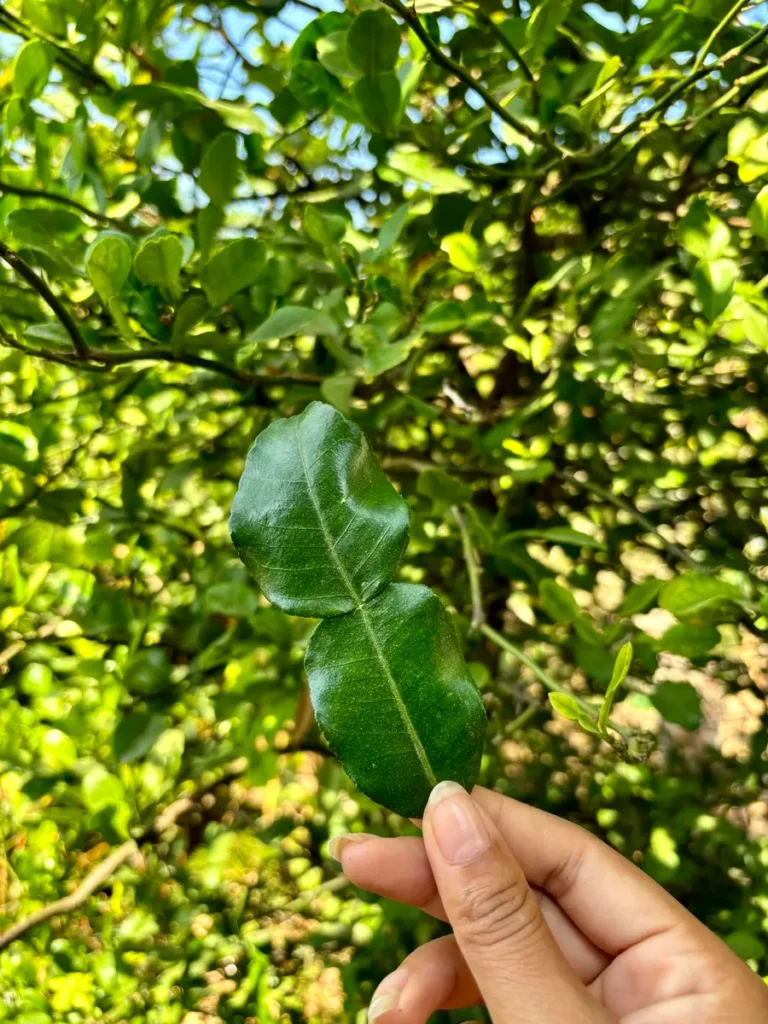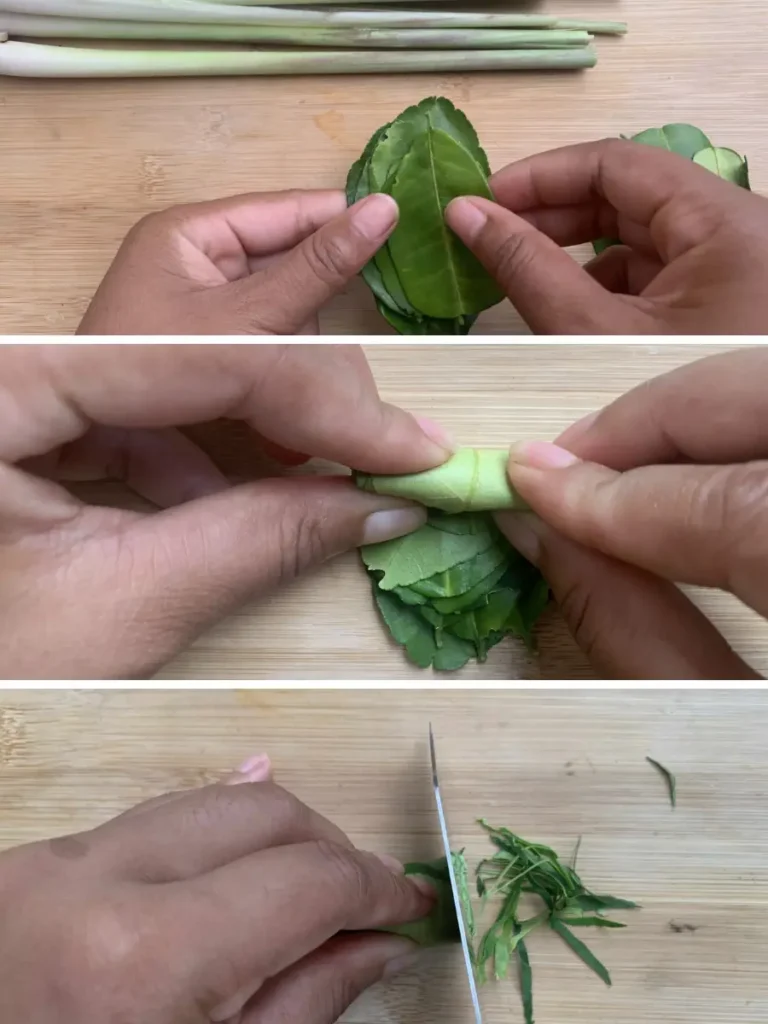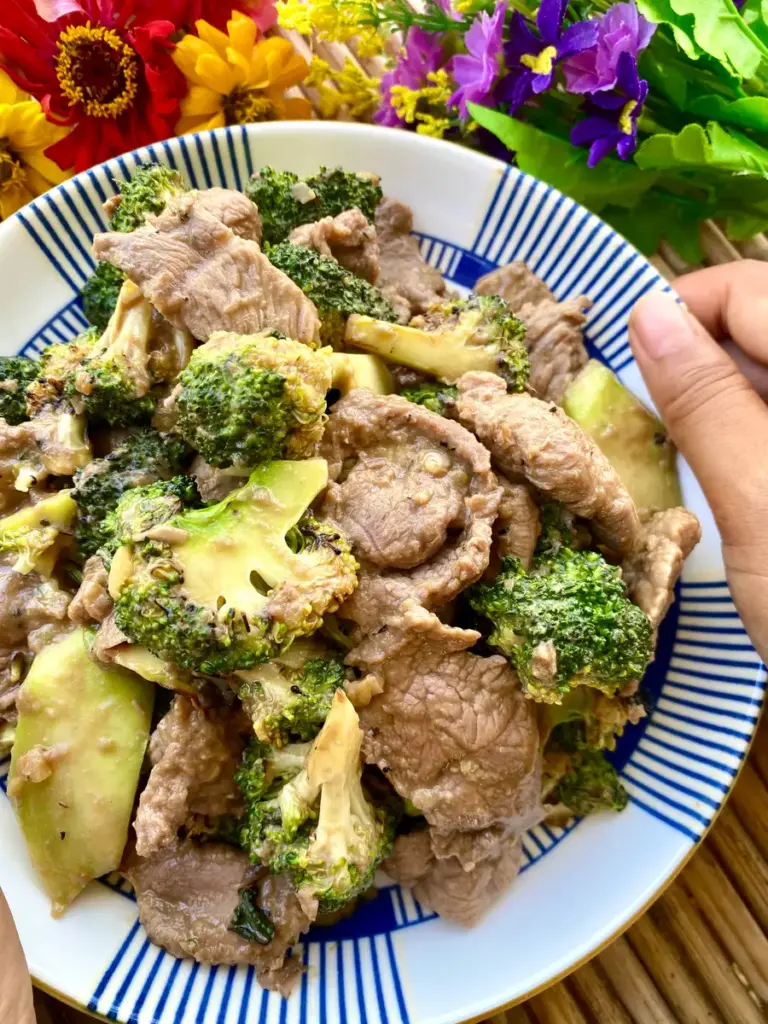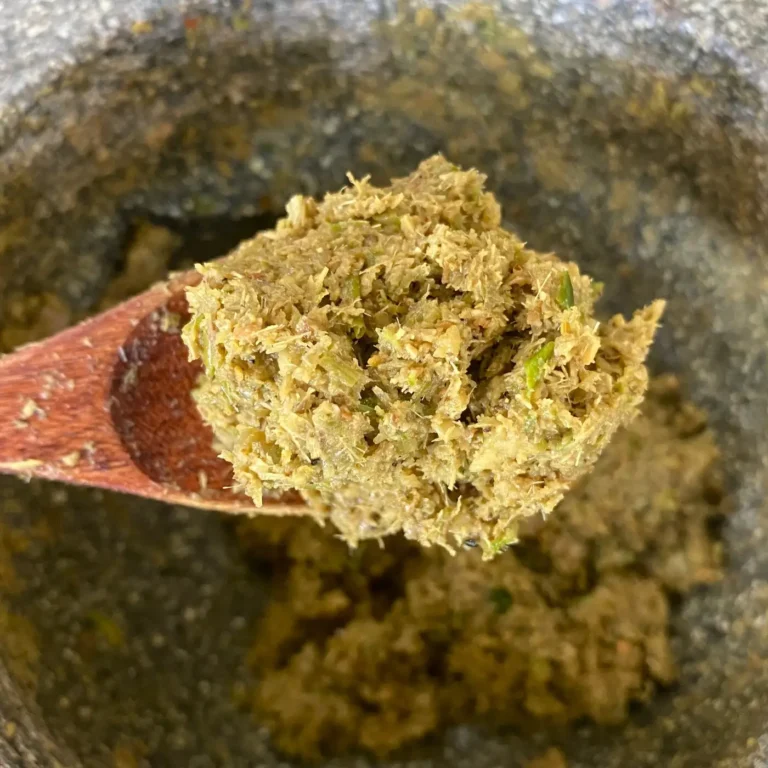Kaffir Lime Leaves Explained: A Complete Guide
As an Amazon Associate, I earn from qualifying purchases. Read the full disclosure here .
Kaffir lime leaves (also called makrut lime) are a must-have in Thai kitchens. Growing up, my mom and grandma would tear these dark green leaves into curries and soups, filling our outdoor kitchen with their bright, citrusy aroma. Now, I can’t imagine making my Thai recipes without them!

In this article, I’ll share what I’ve learned from cooking with kaffir lime leaves in Thai restaurants, explain what makes them so unique, and show you some of my favorite recipes to make the most of their flavor.
Tip: Want to learn more about the key ingredients used in Thai food? Check out my guide on essential Thai pantry staples for all the must-haves.
What are kaffir lime leaves
Kaffir lime leaves, or makrut lime leaves, are fragrant, dark green leaves from the kaffir lime tree. Known for their citrusy, floral aroma, they’re used in cooking, as well as in teas, essential oils, and traditional remedies for their refreshing and uplifting scent.
What do they taste like?
Kaffir lime leaves taste fresh, herbal, and citrusy, with a refreshing aroma. Their dark green leaves combine hints of lemon, lime, and floral notes. When torn or bruised, the leaves release their essential oils, infusing dishes with a distinct lime-like flavor.
Where can you find them?
While these leaves are a common sight at fresh markets in Thailand, my readers in the US have mentioned that they’re sometimes hard to find.
Fresh kaffir lime leaves are usually in the produce section or sold frozen in the freezer aisle at Asian grocery stores. If that’s not an option, try looking for dried leaves online, in the Asian food section of big stores, or at Asian markets. Keep an eye out for alternative labels like makrut lime leaves or Thai lime leaves.
Are there substitutes for kaffir lime leaves?
If you’re searching for substitutes, you might see lime zest, bay leaves, or even lemongrass recommended. While these can add a hint of citrus, they don’t match the uniqueness of kaffir lime leaves.

Staying true to the authenticity of Thai cuisine is really important to me. For instance, you can’t swap holy basil (used in pad kra pao) with Thai basil, as that would completely change the dish into pad horapa! You won’t see anyone doing that in Thailand. And if you’ve been following me for a while, you know I’m all about keeping it real with authentic Thai recipes.
With that in mind, and after discussing with a few wise Thai elders, I’ve realized there’s really only one good substitute for kaffir lime leaves: dried kaffir lime leaves!
Looking for similar articles on Thai ingredients? Be sure to bookmark my post on garlic chives, pandan, and lemongrass for later!
Now, let’s talk about how to cook with kaffir lime leaves to bring some authentic Thai flavor into your homemade dishes.
Tips for cooking with kaffir lime leaves
Here’s how I was taught to use kaffir lime leaves during my years working at Thai restaurants in Belgium:
- For stir-fries or salads: Thai cooks stack and roll the leaves before slicing them thinly for stir-fries or salads. If you’re short on time, remove the stems and add the halved leaves, but thin strips are preferred for eating. (Example dishes: khua kling, pla goong salad)
- For soups or curries: Tear the leaves in half and remove the stems. Let them simmer to release their citrus aroma. (Example dishes: lemongrass soup, eggplant green curry)
- For curry pastes: Use the zest of kaffir lime in traditional Thai curry pastes. Pound it with lemongrass, galangal, and dried chilies using a mortar and pestle.

More recipes with kaffir lime leaves
Ready to cook? Check out my favorite recipes using these aromatic leaves below.
Using kaffir lime fruit
The fruit of the kaffir lime tree is rarely used in cooking, compared to the leaves. Its juice is quite bitter, but the zest is prized for its intense citrus aroma. You can use the zest in my Thai red curry paste, green curry paste, and panang curry paste.
Makrut lime leaves benefits
Kaffir lime leaves are known to boost the immune system, improve cardiovascular health, relieve anxiety, promote oral health, and support digestion. They also provide anti-aging benefits and essential nutrients for hair growth. (source)
Cytrus hystrix
Citrus hystrix, the botanical name for the kaffir lime tree, is a small tropical tree with thorny branches and rough, bumpy limes. The trees are native to Southeast Asia, growing well in warm climates and well-drained soil.

My closest neighbors have a beautiful kaffir lime tree in their backyard. The trees keep their vibrant green leaves all year long, and in Thailand, the kaffir lime fruit grows once a year.
Conclusion
I hope this helps you feel confident using kaffir lime leaves in your Thai cooking. If you have questions or want to share your favorite dishes, drop a comment below. Remember, there’s really no perfect substitute for their unique flavor!






